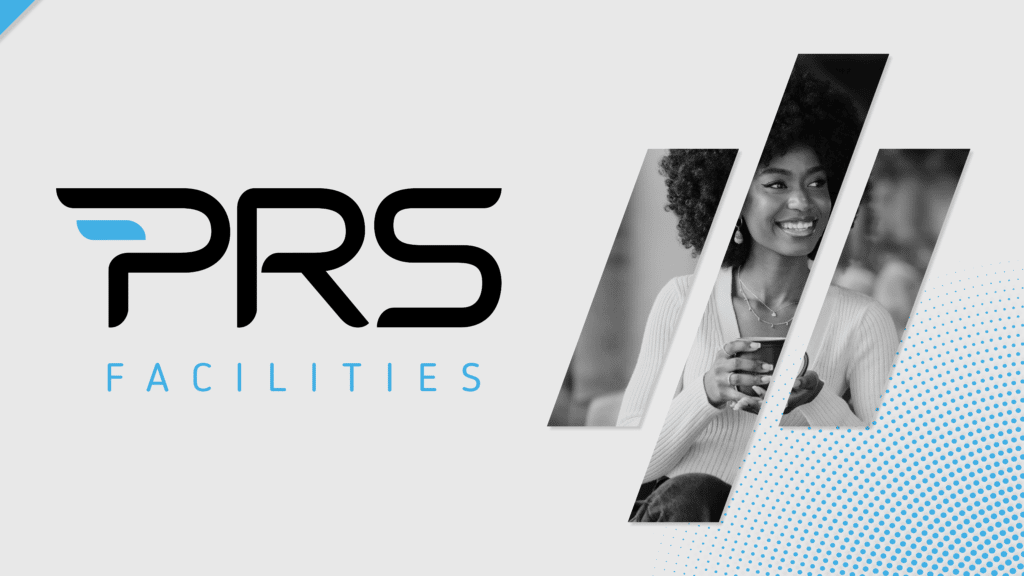Data Centre Trends and Challenges for 2025: A Recruitment Expert’s Perspective
The data centre industry is at a pivotal moment. The rapid evolution of technology in 2025 has created a surge in the demand for digital infrastructure, shifting workforce dynamics and reshaping the digital landscape. For professionals in the data centre sector—whether engineers, project managers, or technicians—the opportunities are vast, but so are the challenges. At PRS Americas, we’ve been connecting top talent with leading employers across this space for years, giving us a front-row seat to the trends driving the industry and the hurdles ahead.
Let’s unpack the key data centre trends and challenges for 2025, offering insights grounded in industry expertise and recruitment know-how. From sustainability pressures to the rise of AI-driven operations, we’ll explore what’s shaping the future of data centres and how professionals can position themselves to thrive. Let’s dive in.
Trend 1: Sustainability Takes Centre Stage
Sustainability is no longer a buzzword—it’s a mandate. According to recent estimates, data centres consume roughly 1-2% of global electricity. Accordingly, they are under intense scrutiny to reduce their environmental footprint. In 2025, this pressure will intensify as governments tighten regulations and businesses commit to net-zero goals.
What’s Driving This Trend?
The exponential growth of data—fueled by cloud computing, IoT, and generative AI—has pushed energy demands to new heights. A Deloitte forecast suggests global data centre electricity usage could nearly double from 536 terawatt-hours in 2025 to over 1,000 TWh by 2030. Combine this with rising energy costs and public demand for greener practices, and it’s clear why sustainability is a top priority.
Key Developments
- Renewable Energy Adoption: Companies are increasingly powering facilities with solar, wind, and hydroelectric sources. Some, like Switch Data Centres, have been 100% renewable since 2016.
- Advanced Cooling Solutions: Liquid cooling systems, including immersion and direct-to-chip methods, are gaining traction to manage heat from high-density AI workloads while cutting energy use.
- Carbon Neutrality Goals: Hyperscalers like Google and Microsoft are targeting carbon neutrality, influencing smaller operators to follow suit.
Challenges Ahead
The shift to sustainable practices isn’t seamless. Retrofitting legacy data centres for energy efficiency is costly and complex. New builds in regions with limited renewable energy access face logistical hurdles. And then there’s the talent gap—employers need engineers and technicians skilled in green technologies, yet these specialists are in short supply.
Recruitment Takeaway
For professionals, expertise in sustainable design or renewable energy integration is a ticket to high-demand roles. At PRS Americas, our data centre jobs feature opportunities for sustainability-focused engineers and managers. If you’re looking to upskill, consider certifications in energy-efficient systems—it’s a move that could set you apart in 2025.
Trend 2: AI-Powered Data Centres Gain Momentum
Artificial intelligence isn’t just transforming the workloads data centres process—it’s revolutionizing their operations. In 2025, AI will play a starring role in optimizing efficiency, predicting maintenance needs, and enhancing security.
What’s Driving This Trend?
The computational demands of generative AI models, like those powering ChatGPT or DALL·E, require unprecedented processing power. This has spurred a structural shift in data centre design and operations.
Key Developments
- Automation: AI systems automate routine tasks like server monitoring and resource allocation, reducing human error and operational costs.
- Predictive Maintenance: Machine learning algorithms can forecast equipment failures, minimizing downtime—a critical advantage in an industry where every second counts.
- Energy Optimization: AI-driven tools adjust cooling and power usage in real-time, aligning with sustainability goals.
Challenges Ahead
Implementing AI isn’t plug-and-play. Legacy facilities often lack the infrastructure to support high-density GPU clusters, requiring significant upgrades. Cooling these systems is another hurdle—liquid cooling is effective but demands specialized knowledge. From a recruitment standpoint, finding professionals who blend AI expertise with data centre experience is like searching for a needle in a haystack.
Recruitment Takeaway
The rise of AI opens doors for data scientists, AI engineers, and hybrid IT specialists. If you’re a professional with a background in machine learning or systems optimization, explore our data centre jobs page. Employers are eager for talent to bridge the gap between AI innovation and operational reality.
Trend 3: Edge Computing Expands the Footprint
Edge computing—processing data closer to its source—continues to gain traction in 2025, driven by the need for low-latency solutions in IoT, 5G, and real-time analytics.
What’s Driving This Trend?
Centralized data centres can’t keep up with the speed demands of modern applications. Edge facilities, often smaller and decentralized, reduce latency by bringing compute power to urban hubs or remote sites.
Key Developments
- Micro Data Centres: Compact, modular units are popping up in cities to support smart infrastructure and autonomous vehicles.
- Regional Growth: The Asia-Pacific region, led by India and South Korea, is seeing rapid edge expansion due to digital transformation and e-commerce booms.
- Hybrid Models: Edge and cloud integration is creating flexible, scalable networks.
Challenges Ahead
Scaling edge deployments without compromising security or uptime is a tightrope walk. These facilities require robust cybersecurity—think zero-trust models and advanced threat detection—yet many operators lack the resources to implement them fully. Plus, edge sites need local talent for maintenance, straining recruitment pipelines in less traditional data centre markets.
Recruitment Takeaway
Edge computing calls for professionals skilled in network architecture, cybersecurity, and modular design. Our engineering jobs collection includes roles tailored to this growing niche. If you’re a technician or engineer with a knack for distributed systems, 2025 could be your year to shine.
Trend 4: Talent Shortages Reach a Tipping Point
The data centre industry’s growth is outpacing its workforce. In 2025, the talent shortage will be one of employers’ most significant challenges—and one of the greatest opportunities for job seekers.
What’s Driving This Trend?
Demand for data centre capacity is skyrocketing—JLL predicts 10 gigawatts of new construction will break ground globally in 2025. Yet the supply of skilled workers hasn’t kept pace. Aging infrastructure, new technologies, and geographic expansion stretch the talent pool thin.
Key Developments
- Specialized Roles: Demand is surging for experts in AI, liquid cooling, and sustainable design.
- Upskilling Initiatives: Companies are investing in training to bridge gaps, but progress is slow.
- Global Competition: Employers in emerging markets like Asia-Pacific are vying for the same talent as North American firms.
Challenges Ahead
The skills mismatch is stark. Many veterans excel in traditional systems but lack knowledge of AI or edge technologies. Meanwhile, younger professionals often bring tech-savvy but need hands-on experience. Retention is another issue—competitive salaries and remote work options in other industries lure talent away.
Recruitment Takeaway
For employers, partnering with a recruitment specialist like PRS Americas can streamline the search for niche talent. Check out our employer services to see how we connect you with vetted candidates. For job seekers, this is your moment—brush up on in-demand skills and explore our latest job openings to find your next career move.
Trend 5: Quantum Computing Emerges on the Horizon
While still in its infancy, quantum computing is starting to influence data centre planning in 2025. Hybrid quantum-classical systems are appearing in research facilities, hinting at a future where quantum workloads reshape infrastructure.
What’s Driving This Trend?
Quantum computing promises to solve complex problems—like cryptography or molecular modeling—far faster than classical systems. As AI and big data push computational limits, quantum offers a leap forward.
Key Developments
- Hybrid Facilities: Early adopters are integrating quantum servers with traditional setups.
- Cloud Access: Most quantum systems in 2025 will be cloud-based, lowering the barrier to experimentation.
- Specialized Infrastructure: Quantum requires ultra-stable conditions and extreme cooling, driving innovation in facility design.
Challenges Ahead
The road to widespread adoption is long. Quantum systems demand cryogenic environments, which are energy-intensive and expensive. The talent pool is even smaller here—quantum expertise is rare, and workforce training will take years. For now, this trend is more speculative than immediate, but forward-thinking operators are laying the groundwork.
Recruitment Takeaway
Quantum computing roles are niche but growing. Physicists, quantum engineers, and systems architects with an eye on the future should keep tabs on our technology jobs page. This is a space to watch, not rush into—yet.
Challenge 1: Power Infrastructure Bottlenecks
Power scarcity is the elephant in the room for data centres in 2025. As facilities scale to meet AI and edge demands, energy grids struggle to keep up.
The Issue
Building transmission lines takes years, and renewable energy projects can’t always match the pace of demand. Bloomberg analysis has flagged grid reliability concerns, with AI-driven data centres straining local power quality.
Impact
Delays in power availability are stalling new builds, especially in high-demand markets like Northern Virginia and Silicon Valley. Operators face rising costs as they turn to temporary solutions like natural gas, complicating sustainability goals.
Recruitment Angle
Electrical engineers and power systems specialists are critical to solving this puzzle. Our data centre engineering roles connect talent with projects tackling these infrastructure challenges head-on.
Challenge 2: Cybersecurity in an AI-Driven World
As data centres embrace AI and edge computing, cybersecurity risks multiply. Protecting these complex ecosystems will be a top priority in 2025.
The Issue
AI-powered operations introduce new vulnerabilities—think ransomware targeting backups or edge sites with weaker defenses. FortiGuard Labs reported over 5,400 ransomware variants in 2021, a trend that’s only grown.
Impact
Breaches can cripple operations and erode trust. Operators need robust defenses like zero-trust models and AI-driven anomaly detection, but implementing these requires expertise many lacks.
Recruitment Angle
Cybersecurity specialists with data centre experience are in high demand. Explore our cybersecurity jobs to find roles safeguarding the industry’s future.
Challenge 3: Balancing Cost and Innovation
Innovation, whether in AI, quantum, or green tech, comes with a hefty price tag. In 2025, data centre operators will grapple with aligning budgets to cutting-edge demands.
The Issue
JLL estimates $170 billion in asset value will need financing in 2025 for new builds and completions. Retrofitting older facilities adds another layer of expense, especially for smaller operators.
Impact
Cost pressures could slow the adoption of transformative technologies, widening the gap between hyperscalers and mid-tier firms. Talent costs are also rising as competition heats up.
Recruitment Angle
Project managers and cost estimators who can optimize budgets without sacrificing innovation are invaluable. Check out our project management jobs for opportunities to lead in this space.
Looking Ahead: Preparing for 2025
The data centre industry in 2025 is paradoxical—brimming with potential yet fraught with complexity. Sustainability, AI, edge computing, talent shortages, and quantum possibilities are converging to create a dynamic landscape. For employers, the challenge is finding the right people to navigate this evolution. For professionals, it’s about seizing the moment to build a career in a sector shaping the digital world.
At PRS Americas, we’re here to bridge that gap. Whether you’re an employer seeking top-tier talent or a job seeker eyeing your next role, our expertise in data centre recruitment can guide you forward. Curious about where you fit in this future? Browse our job search page or reach out to discuss your next step.
Share Article
Related Articles

What are technical skills?
You may have heard of soft skills and hard skills; soft skills are personal attributes that help individuals interact effectively with others. These skills are often more complicated to measure but are crucial for teamwork and workplace success. On the other hand, hard skills are specific, teachable abilities that can be measured and learned through…

Data Centre Trends and Challenges for 2025: A Recruitment Expert’s Perspective
The data centre industry is at a pivotal moment. The rapid evolution of technology in 2025 has created a surge in the demand for digital infrastructure, shifting workforce dynamics and reshaping the digital landscape. For professionals in the data centre sector—whether engineers, project managers, or technicians—the opportunities are vast, but so are the challenges. At…
